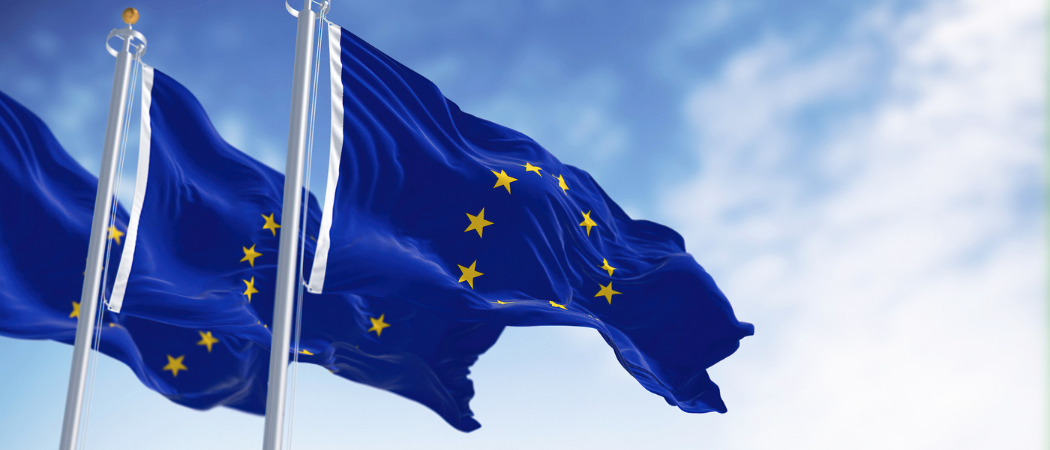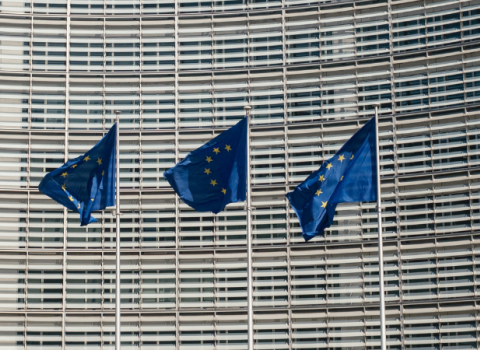Experts charged with shaping the European Research Area have differing views on what to prioritise. Discussions have now begun on which of the proposed actions should be taken forward in the 2025 – 2027 agenda

Work has started on the 2025 – 2027 policy agenda of the European Commission’s ERA Forum for Transition, the expert group set up to shape the European Research Area (ERA) and create a borderless, single market for research, science and technology.
The group is currently overseeing the 2022 - 2024 ERA Policy Agenda, a list of 20 actions drawn up to promote the concept of the united research area. Now it is past the half-way point, the group has turned its attention to what follows in 2025 - 2027.
This represents the first chance for stakeholders, including university associations, research and technology organisations and regional authorities, to have their say in the ERA policy agenda.
When the ERA project was revived in 2020, stakeholders were involved in the planning stages, but were left out of the ERA Forum, which consists of representatives of member states and association countries sitting alongside the Commission, but did not involve anyone at the grass roots.
After fighting their side, stakeholders were eventually brought into the fold with the status of “observers”. Eleven organisations now have observer status.
Stephane Berghmans, director for research and innovation at the European University Association (EUA), now sits on the Forum as the single representative of 11 university alliances.
“From the side of the universities, we're very happy with the process of planning the next agenda, because obviously the last time around we were not at all part of the development,” he said. “Last time around ideas were thrown in without really knowing yet what an ERA Action or policy agenda should look like.”
Indeed, one of the main topics of discussion at the past few ERA Forum meetings was about the nature of ERA Actions, which are based on a range of themes (the full list is here). For example, Action 3 is on reforming research assessment; Action 8 on strengthening research infrastructures; and Action 13 on empowering higher education.
And while some are taking shape, others have barely got going, or not at all. Action 18 on supporting member states in implementing ERA has been folded into Action 16 on closing the EU’s east-west innovation gap, while Article 20 on supporting research and innovation investments never got enough support to begin.
Others, such as Action 6 on academic freedom, have technically started but according to Berghmans, “not much has actually happened”.
There has been some concrete progress. The Commission recently announced new measures aimed at improving career paths and working conditions for young researchers that came out of work on Action 4 of the ERA Policy Agenda.
Action 13 on empowering higher education institutions is also considered to be working well. “We have regular meetings with the Commission and member states on this,” Berghmans said. Policy recommendations are due at the end of the summer.
But some stakeholders have not bought into the agenda, while others think there are too many actions. Cutting the number in the next agenda has been tabled.
The CESAER alliance of science and technology universities says there is a simple formula for deciding on ERA Actions, which is either because new funding is required at a national level to push the chosen area, or because legal or legislative barriers at an EU level need to be modified to allow the Action to advance.
“We should only create an ERA Action if either of these control questions are fulfilled,” Mattias Björnmalm, secretary general of CESAER, told Science|Business.
But as Björnmalm sees it, member states or EU institutions are tempted to “hitch their own wagon” to ERA to promote their pet topics.
The 2025 - 2027 agenda is still in the very early stages of planning but it has already been suggested there should be actions on hydrogen and on the use of animals in research, while EUA and other university alliances are in favour of an action on supporting fundamental research.
But it will be tricky to add any new actions while the consensus is that the list is already too long.
“What you hear each time we discuss this, is that almost every country says there are too many actions so we need to be strict in selecting new ones,” Berghmans said. “There’s going to be high competition.”
Pirita Lindholm, director of the European Regions Research and Innovation Network, is also against adding more actions. "Overall, I have the feeling that the number of topics in the ERA policy agenda is overwhelming and it is not easy to focus and define issues that are most important and would require follow up, monitoring or further guidance from the ERA Forum," she said.
Beyond Brussels
ERA might come with its own new “Pact for Research and Innovation in Europe”, but it still seems to be suffering from a problem dating back to its initial conception at the start of the century, of being a Brussels-centred idea that fails to get the attention of national level institutes and stakeholders.
Berghmans highlighted this in a recent paper in which he called for more engagement with national stakeholders.
“I was speaking to researchers from an EUA member university and asked them if they knew about ERA. As is too often the case when I ask this question, no one raised their hand. I’m afraid it is not much different when I speak to university leaders,” he wrote. “ERA might be a reality for us in Brussels, but it must still become a reality for stakeholders across the EU.”
This applies also to national governments, some of which are less inclined to get involved in ERA.
ERA has a “very strong focus on a voluntary, if-you-feel-like-it type of approach,” Björnmalm said. “This, I think, is deeply problematic in itself, as ERA is a legal obligation laid down in the treaty of the functioning of the EU.”
Sarika Wilson, head of policy at the Guild of European Research-Intensive Universities, is waiting to see if ERA Actions have an effect at a national level. The ERA Forum has a lot of value because it brings together the Commission, the member states and stakeholders. “That opens up a lot of opportunities for better informed policymaking,” she said.
But whether that will filter down to national policies remains to be seen. "Something that we're still waiting to see is how much impact these debates and these possibly emerging joint directions have in our research and innovation policy and how much they will have an impact on the national levels as well."
Where she sees an opportunity is in using the ERA Forum as a platform to steer Horizon Europe and to shape its successor, due to kick off in 2028. “I see that there is an opportunity for optimising upcoming approaches in EU funding in this way, when you have also stakeholders included in the co-creation processes from early on,” Wilson said.
However, large-budget EU legislation that has come in recently or is in the process of being introduced, such as the Green Deal, the AI Act, the Data Act or the new €10 billion fund for key technologies (STEP) were almost not discussed in the ERA Forum, Björnmalm said.
“So, there are those who are nasty and say that the ERA Forum is not the grown-up’s table where you talk about the really difficult and high-level policy decisions. We should ask ourselves how we change that?" he said.
Stakeholder categories need rethought
There has been a level of grumbling since the stakeholders were brought into the ERA Forum about the number of places given to them. For example, the 11 university alliances representing hundreds of universities have just one space. The League of European Research Universities opted not to be involved as a result.
For Berghmans, limiting the number of stakeholders is understandable. “I think it’s working. It would be nice if there were more of us, but there was a concern, especially at the beginning among member states, that they would be overwhelmed by the stakeholders,” he said.
And while ERA Forum covers all ERA Actions, there are several sub-groups working on individual elements where the stakeholders are more prominent and can sometimes outnumber member state and Commission representatives.
Planning for the new policy agenda will continue into 2024. Further guidance on the strategic direction will come this October during a meeting of the European Research Area and Innovation Committee (ERAC), an advisory committee that liaises with the EU Council and the Commission.
The European Parliament elections in June and the new European Commission will influence when a new ERA Policy Agenda for 2025 is finally adopted.





 A unique international forum for public research organisations and companies to connect their external engagement with strategic interests around their R&D system.
A unique international forum for public research organisations and companies to connect their external engagement with strategic interests around their R&D system.